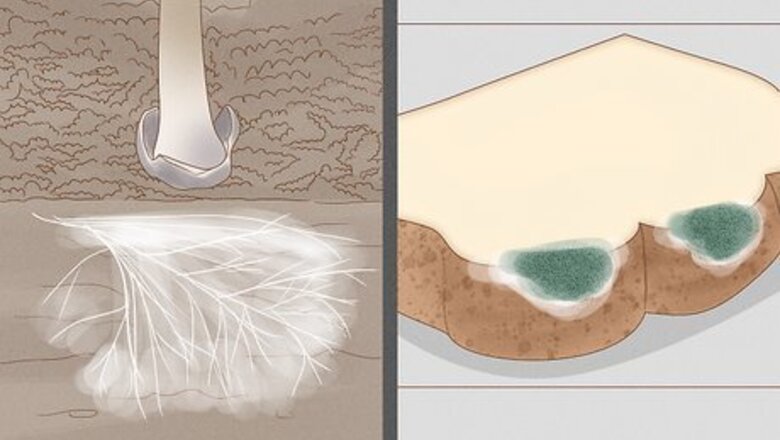
views
Learning about Mold
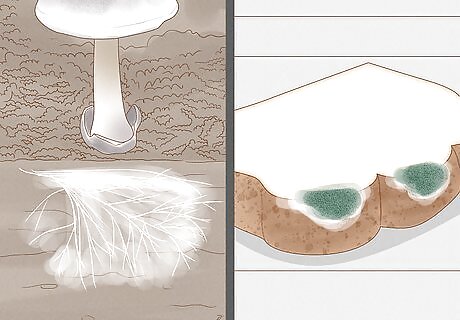
Understand what mold is. Mold is just one of the many types of fungi that humans are in contact with every day. Molds are scientifically defined as multicellular organisms of the kingdom fungi (a taxonomic order at the same level as plants or animals). The single mold organism, made up of genetically identical cells, is known as a mycelium.
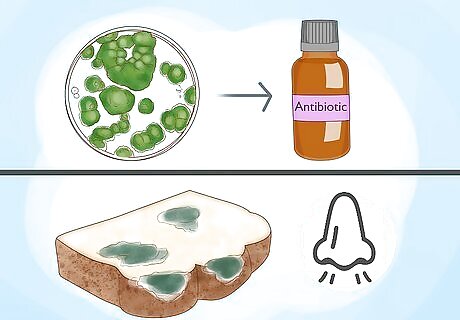
Get to know how molds impact life on earth. Most people recognize mold as the furry or discolored patch on a slice of bread or a piece of fruit, but not all molds are undesirable. Some molds aid in the preservation of foods—as is the case with some cheeses. Others (penicillin) have provided life-saving antibiotics to human beings. Molds and other fungi also play a vital role in the process of decomposition. They break down the structures of plant and animal cells and allow the nutrients they contain to re-enter the food web.
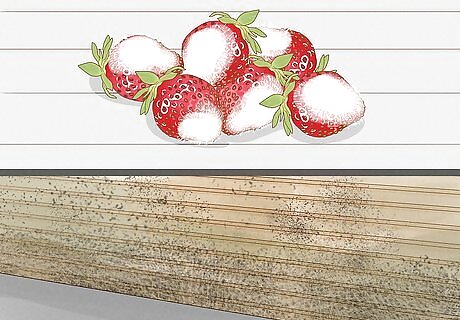
Know the three things that all molds need. Molds are living things, and in fact, their cell structures are more like that of animals than plants. Like all living things, molds need water, a food source, and the right environment in order to thrive. Much like animals, molds (and all fungi) cannot produce food internally. All of the calories and nutrients that they require to function must be obtained from an external source. Molds, as a broad category, are not choosy. Some grow well in starchy foods, others target fruits and vegetables, while others still will sprout from the tiny shreds of organic matter (mostly paper) in moist drywall. Molds survive best in damp or wet environments. Of course, most living things live close to water, but molds are especially dependent upon it. Unlike both plants and animals, molds employ a process of external digestion. Dry environments make the absorption of nutrients difficult for molds. They will not thrive without access to moisture. Most forms of mold also prefer warm temperatures. There are two primary reasons for this. The enzymes that molds use in both external digestion and internal cell processes function best at temperatures well above the freezing point. In addition, molds are multicellular organisms without complex circulatory systems. It is easier to transfer nutrients from cell to cell in warm environments than in cold ones. Though a few molds are actually light sensitive, most are not directly affected by sunlight. Molds typically do not grow in sunny places only because such areas are at risk of drying out.
Growing Your Own Mold
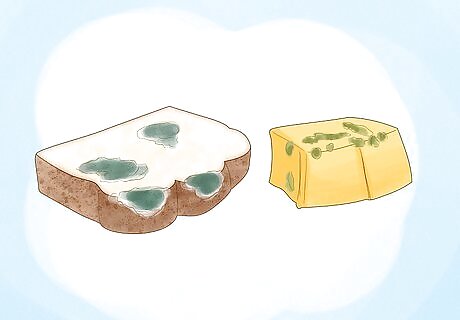
Identify a potential food source. As mentioned above, nearly anything that was once alive (and a few that were not) are potential food sources for mold. However, some molds are more common than others. One of the most common molds is penicillin, which often grows on bread. Bread is convenient for mold for the same reason that it is a great food for people. The organic matter in the grains that make up bread your already been partially broken down. Just as with humans, bread is easier for mold to digest than are the grains themselves. Dairy products, and cheese in particular, also grow molds effectively. It may be easiest to trace the development of mold on a mold-free cheese such as a soft mozzarella. On the other hand, some cheese contains live mold inside of them or on an outer skin. These cheeses could serve as both mold food and a source for mold.
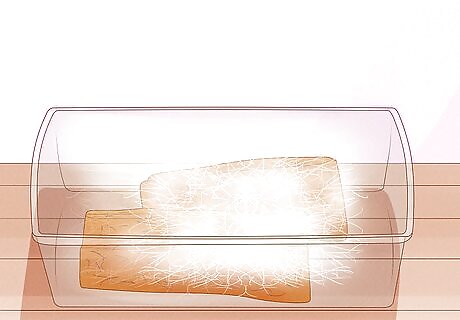
Find an appropriate container. Molds release spores that can cause allergies, and a few can even cause infections. While most are harmless, you should protect yourself. Look for a potential container in which the mold can grow. The best containers should be clear so you can observe the mold without exposing yourself to it. They also must have airtight and watertight seals. Even if you do not add moisture, the decomposition process will likely get messy. One of the best container options is a clear, sealable plastic bag. You can observe the mold as it grows, keep it perfectly contained, and then throw it away when it’s finished growing. You may want to use a high-quality plastic bag, as a broken seal later can lead to an awful mess. For all of the reasons previously mentioned, you should find a disposable container. After you have created a container full of mold, you must not open it.
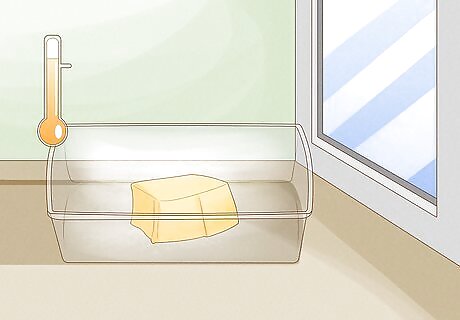
Locate the ideal environment. As noted earlier, molds do not need to be kept out of the light, but high exposure to sunlight can potentially dry them out. Also, while some can live in the cold, the majority grow best in warm environments. Find a warm, sheltered place to keep you mold as it grows.
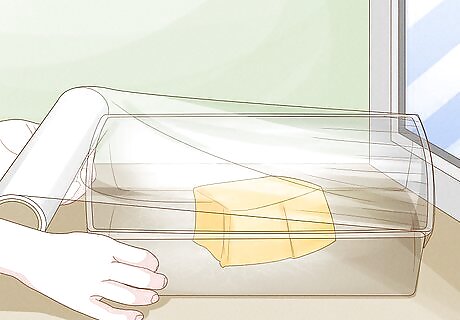
Seal the mold’s food source into the container. Mold spores are everywhere, and you will not need to “plant” them on the food source. They are certainly already there. Make sure the environment in the container is moist enough. Your goal should be to seal the container and never open it again while growing the mold. If the food source dries out as you are still waiting for the mold to grow, you may have to open the container and add more water. At the same time, most molds do not grow directly in water. Keep the food source moist without flooding it.
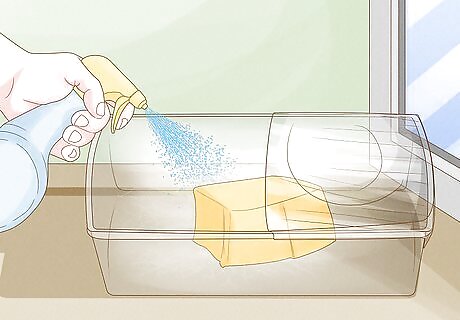
Check the progress of the mold growth daily. Check the container for mold regularly, and daily if possible. If there is no apparent mold and the food source looks dry, open the container and sprinkle a few drops of water onto it. If you open the container, it may be a good idea to wear disposable rubber gloves and a mask to cover your face and nose. Even if you cannot see the mold, some may be growing already. Most molds are not dangerous, but some can be. Do not take any risks.
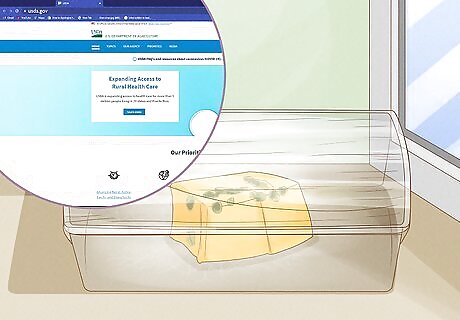
Learn about the mold that you grew. Observe it closely and note the colors and forms of the mold patches. They can indicate the type that is growing on the food source. You can find out more about common molds on the webpage of the US Department of Agriculture website (link below).
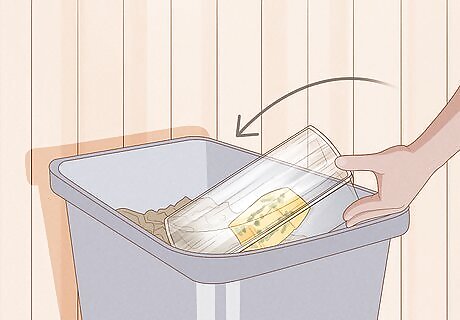
Dispose of the mold when you are done. Throw the entire container in the garbage. Do not open the container.




















Comments
0 comment